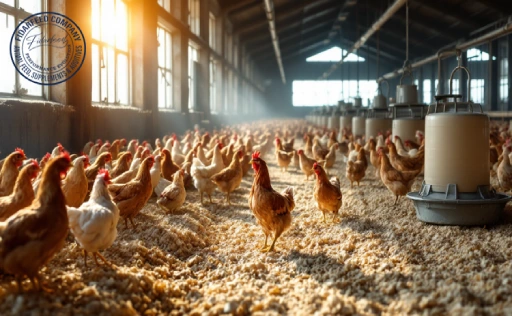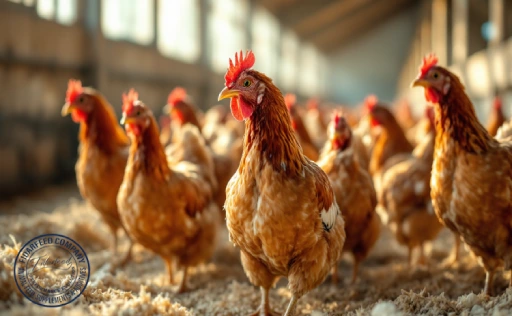
How to prevent Marek’s disease in chickens is one of the most important questions every poultry breeder must address. Marek’s disease, caused by a highly contagious herpesvirus, can strike fear into the heart of even the most experienced chicken farmer. It primarily affects the nervous system, eyes, and immune system of chickens, often leading to paralysis and death. But here’s the good news: with the right knowledge and preventive actions, you can protect your flock. Whether you’re managing a small backyard coop or a large-scale breeding operation, this guide will show you how to stay ahead of the virus and keep your birds thriving.
Vaccination First: The Most Effective Way to Prevent Marek’s Disease
The most effective way to prevent Marek’s disease is through vaccination. Administered to chicks within the first 24 hours of life, the Marek’s vaccine offers vital protection during the most vulnerable period. Timing is everything—vaccinating even a few days late can drastically reduce its effectiveness.
Learn more about: Active Probiotic Yeast for Poultry
Breeders should purchase vaccinated chicks when possible or coordinate with a vet to ensure timely administration. The vaccine doesn’t eliminate the virus, but it greatly reduces disease severity and spread. While some may hesitate at the cost, the long-term health and survival of your flock make this a wise and essential investment.
Biosecurity Basics: Daily Practices to Keep Your Flock Safe
Once vaccinated, your flock’s safety relies on strong biosecurity. Biosecurity means keeping pathogens out and preventing their spread within your farm. Simple habits can make a big difference: clean footwear before entering the coop, change clothing after contact with other birds, and never allow wild birds or rodents near your flock.
Learn more about: Why Poultry Producers Trust Bentonite in Layer Feed
Disinfect all equipment regularly, especially feeders, drinkers, and tools shared across coops. Quarantine any new birds for at least two weeks. These basic steps help minimize exposure and provide a critical line of defense alongside vaccination.
Chicks at Risk: How to Protect Young Birds from Marek’s Disease
Chicks are highly susceptible to Marek’s disease, especially during their first few weeks. Their immature immune systems need extra care. Besides immediate vaccination, breeders should ensure chicks are housed in clean, dry brooders with proper temperature control.
Learn more about: Smart Chicken Waste Management: Sustainable Solutions for Poultry Farmers
Avoid overcrowding and stress, as both lower immune function. Offer a high-quality, nutritionally balanced starter feed to support immunity. When introducing chicks to outdoor pens or older birds, ensure the older flock is healthy and the area has been thoroughly disinfected. Early care makes all the difference in a chick’s future.
Housing and Environment: Why Clean Space Matters in Prevention
Marek’s virus spreads primarily through feather dander and dust. That means your coop’s cleanliness is directly tied to your birds’ health. A well-ventilated, dry, and sunlit coop helps reduce virus persistence.
Learn more about: Early Signs of Marek’s Disease in Chickens: How to Detect and Act Fast
Remove droppings and soiled bedding frequently. Consider using deep-litter methods only if managed with strict hygiene. Install screens or mesh to prevent wild bird access, as they can introduce pathogens. Simply put, clean housing keeps your flock stronger and the virus weaker.
Avoiding Cross-Contamination: Control Movement of Birds, People, and Tools
Cross-contamination is a leading cause of Marek’s outbreaks in breeding operations. Visitors, new birds, and even shared buckets can silently carry the virus from place to place.
Learn more about: Cobb Chicken Breeds: An Overview
Limit farm access to essential personnel. Designate specific clothing and tools for each coop or flock. If you attend poultry shows or visit other farms, change clothes and shower before re-entering your own breeding area. Disinfect transport crates and vehicles. These may seem like minor details, but they can be the barrier that keeps your birds safe.
Genetics and Breeding: Choosing Resistant Chicken Breeds
While no breed is entirely immune, some chickens show higher natural resistance to Marek’s disease. Breeds like Leghorns and Fayoumis tend to fare better than heavier, meat-type birds like broilers.
Learn more about: How to Treat Arthritis in Chickens: Key Strategies for Healthier Breeder Birds
Breeding for resistance is a long-term strategy. Track which lines in your flock show stronger health and longevity, and prioritize these in your breeding program. Pairing good genetics with proper vaccination and care creates a triple-layer defense.
Understanding the Virus: How Marek’s Spreads and Survives
To beat Marek’s, you need to understand it. The virus spreads primarily through airborne particles in dander, feathers, and dust—not direct bird-to-bird contact. It can survive in the environment for months, especially in poorly ventilated, dusty, or damp conditions.
Learn more about: Decreased Egg Production in Laying Hens: Common Diseases in Chickens to Watch
Even if an infected bird looks healthy, it can still shed the virus. That’s why prevention, not reaction, is key. Good airflow, sunlight, and regular cleaning help reduce viral load and risk of infection.
Early Warning Signs to Help Prevent Marek’s Disease in Chickens
Catch Marek’s disease early, and you may prevent further spread. Look for signs like leg or wing paralysis, weight loss, droopy posture, and cloudy eyes. In some cases, tumors may develop internally, leading to sudden death.
Learn more about: The Benefits of Probiotics in Poultry: A Must-Know Guide
Keep a flock journal. Record health issues, vaccination dates, and behavior changes. Photos and notes make it easier to track patterns and communicate with your vet. This habit helps you stay one step ahead.
Your Long-Term Plan: How to Prevent Marek’s Disease in Chickens for Good
To prevent Marek’s disease in chickens, every breeder needs a proactive, long-term approach. Start with early vaccination, maintain strict biosecurity, and prioritize housing cleanliness. Protect chicks with care, monitor your flock closely, and avoid unnecessary risks like cross-contamination.
Combine smart genetics with a clean environment, and you’ll reduce disease threats dramatically. Prevention isn’t just about saving money—it’s about ensuring a healthy, productive flock. Don’t wait for an outbreak to act.
Got a tip, question, or personal experience with Marek’s disease? Leave a comment below! Your insight could help other breeders protect their flocks too.







